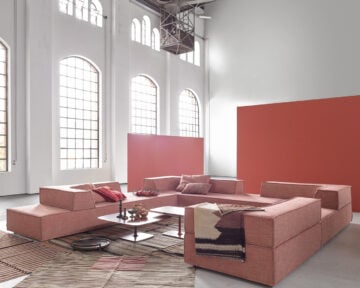Quayside Dream: Toronto’s Future Waterfront

A sustainable community development from Waterfront Toronto aims to tackle the city’s housing crisis – set to complete in 2031
As new entrants bestow upon our growing metropolis, Toronto demands housing units that are both affordable and eco-conscious. To address this influx and the city’s evolutionary needs, Waterfront Toronto has proposed a development aimed at both the city’s housing and climate crises.

Since 2001, Waterfront Toronto has collaborated with developers, conservationists and local community groups to implement large-scale projects across Toronto. Most recently, the organization signed a formal agreement to develop a new Lakeshore housing community expected to span 4.9 hectares of land left abandoned by Sidewalk Labs. Now officially on board, Quayside Impact and Waterfront Toronto can begin formalizing proposals to submit to the City for buildings from the competition submission concept plan. These feature a vivid set of renderings for buildings at the west end of the site. While the project remains in its early stages, renderings and designs produced by an illustrious selection of architects, such as Alison Brooks Architects, Adjaye Associates and Henning Larsen offer a looking glass into our future city.

Last December, Waterfront Toronto, Dream Unlimited Corp, and Great Gulf Group approved the agreement that bound the three organizations to move forward with the early development stages of the Quayside Impact Limited Partnership. The large-scale project will involve the upheaval of the city’s outdated Lakeshore Boulevard Queens Quay area, replacing it with a completely electric-powered, carbon-free community. The current Quayside dream, so to speak, promises:
· Five new towers providing more than 800 affordable housing units, half of which will be suitable for families (2+ bedrooms)
· 5 acres of public space, which include car-free green space spanning Parliament Street to Bonnycastle Street
· A low-carbon development plan, including the largest tall-timber structure in the country

Covered in greenery, Timber House will be equipped with rooftop farming. Residents will have access to community gardens dispersed throughout Quayside, as well as greenhouses with privately-owned public spaces at ground level. As part of Waterfront Toronto’s ongoing mission to prioritize design excellence and advance sustainability, the designers of these public spaces took careful consideration to ensure the sites are inclusive and accessible. Open space networks promise to be barrier-free and accommodating to residents of all ages and abilities. Additionally, the local hub will house a range of programs and services that support the health and wellness of community members.

The project is estimated to house approximately 6,100 people and its commercial space is set to create roughly 1,600 long-term jobs. With the potential to aid economic growth, the Quayside dream can change the lives of city dwellers struggling to find a place to call home. Aside from the prospect of affordable and eco housing – a Toronto goldmine – the community will also deliver new streets, state-of-the-art infrastructure, and an all-new welcoming and safe public realm. Through efforts to build a more accessible, family-oriented community, Quayside will also provide social, business and capacity-building opportunities for Indigenous and equity-deserving communities—a project in collaboration with the Mississaugas of the Credit First Nation.

So what’s next for the Quayside dream? Taking place in two phases, (shown above), the recent project approval will lead to breaking ground soon on the first two blocks, covered by the East Bayfront Precinct Plan. The construction of phase one is estimated to be completed by 2026, marking the beginning of phase two. The second phase, albeit far more complex, will include the construction of the remaining three blocks within the Keating Channel West Precinct, finalizing the Impact project within the next decade.











